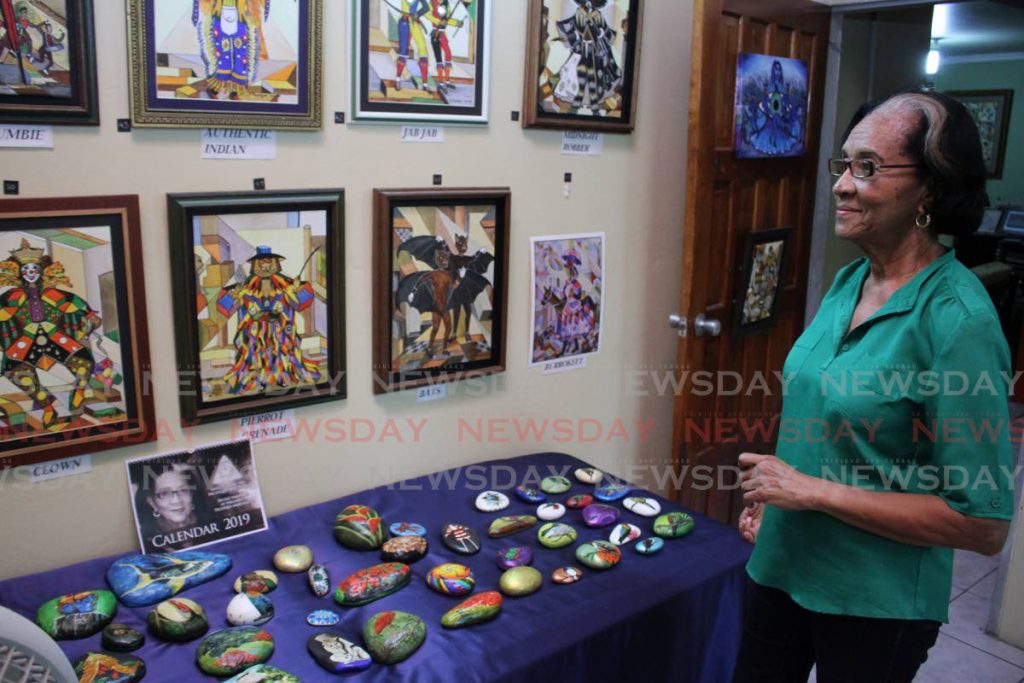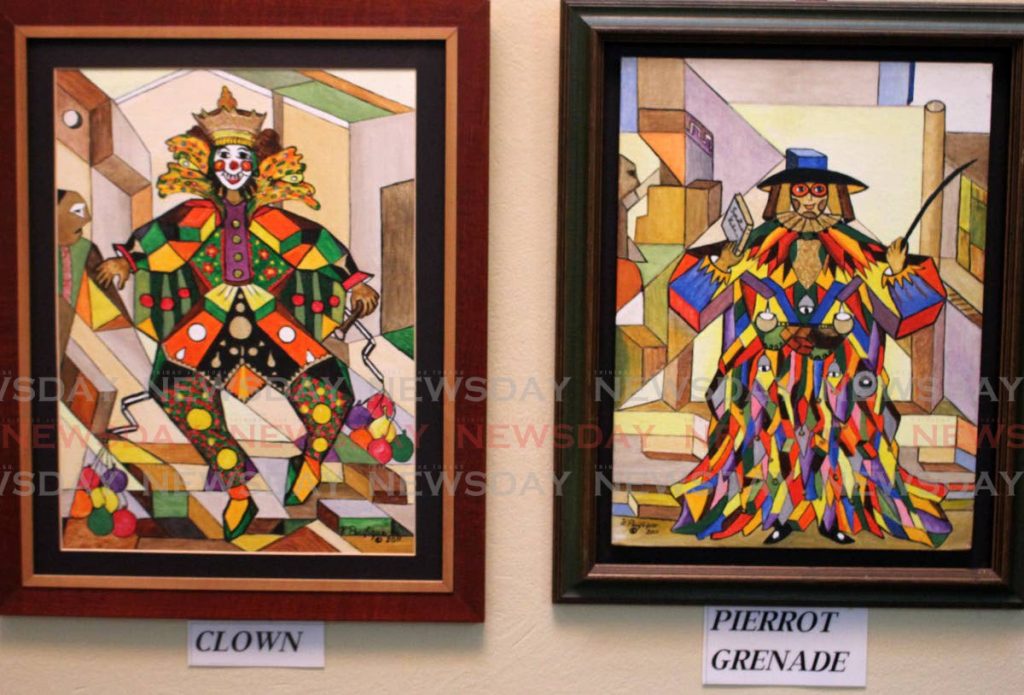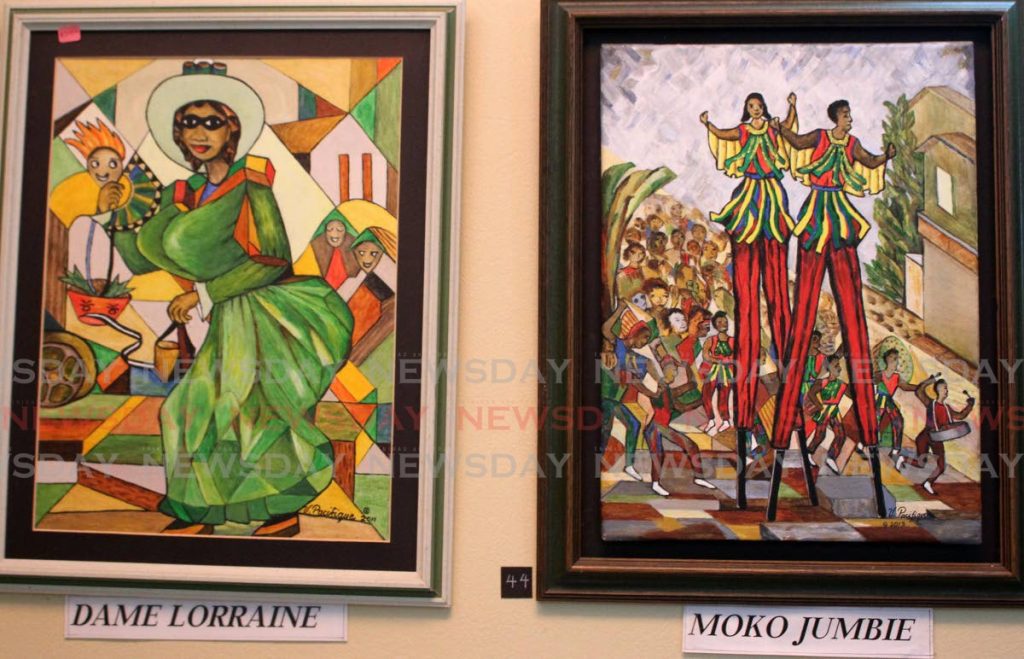The Carnival Suite: Artist writes book on history of mas

TT is a fascinating place, especially the various aspects of its culture. And so, Virginia Pacifique-Marshall, an artist and author, hopes to capture as much of it as possible.
Strangely enough, this passion for grabbing and reproducing elements of culture started because of a broken toe in 2010.
At the time, she could not go to any Carnival events, so she decided to create her own Carnival by painting traditional characters. She started with the dame Lorraine in her own style, which is abstract, but continued in a more realistic style to make the characters more recognisable.
She said she always enjoyed looking at “old time Carnival” even though she was afraid of some of the characters as a child.
“I felt that it should be revived. It so happened that around the time I started painting I found that there was an awareness of traditional mas with NCC (the National Carnival Commission) and so on. I felt this would be my contribution to keeping traditional mas alive. I’m going to just paint.”
This led to a solo exhibition of traditional Carnival characters including three original costumes of her own – Queen of the Colony, Sound of the Wind, and Regeneration – in 2012. At the exhibition she handed out booklets with one-sentence explanations of each character to those who visited.

She said some people did not know or had forgotten some of the characters and, although only her original pieces sold, people begged to keep the booklets.
“I said, ‘If grown-ups can’t remember some of these characters, what about children?’ So, I decided to do a little research and put something together. This was done with kids or visitors to the country who would like to find out about traditional mas in mind.”
In 2014 she released the book, The Carnival Suite, which highlights some traditional Carnival characters and gives a brief, simplified history and meaning behind the mas. She said TT history is not being taught in school, so people do not connect to it. She said people have a general idea that their ancestors were slaves but have no real understanding or appreciation of that history. Therefore, she feels it is important for children to know that Carnival is not just the bikini and beads.
“There is a history behind Carnival, how it started and evolved, and not just as they are seeing it now. And judging from the grown-ups at the exhibition traditional mas was already being forgotten.”
After she retired as a primary school teacher in 2005, Pacifique-Marshall immersed herself in art. She said she has always loved painting and planned to do so upon retirement. In preparation, she did an eight-month course in fundamentals in fine art.
“Just before I retired, I started that course because I knew where I was heading. A year after I retired my husband died suddenly so I had my art to hold on to. That was when it started – abstract work with a little touch of cubism. Picasso was my interest.”

Since then she has joined Women in Art as well as a five-member art group called Collage, and has had several collaborative and solo exhibitions. She also opened a studio, Pacifique Fine Art, at her home in Arima four or five years ago, and expanded into printing her work on postcards, calenders and T-shirts for sale.
She also started rock painting. “I love nature. When you hold a rock in your hand there is a feeling, a vibration that you get. I love rocks. Maybe because my husband was a geologist. So, I started collecting rocks and painting little abstract works of all kinds of things.”
In addition, Pacifique-Marshall recently started painting on wood. She said a friend requested two Hamsas, palm-shaped symbols, on wood and she is looking forward to more wood painting.
She said previously her work was more philosophical and while it continues along that path, lately her work has been about TT culture, including folklore and festivals. She said she is in the process of doing research in preparation to paint the Black Indian mas character.
Two of her paintings, The Burrokeet and The Bookman, are currently being displayed at the National Museum in Port of Spain.


Comments
"The Carnival Suite: Artist writes book on history of mas"